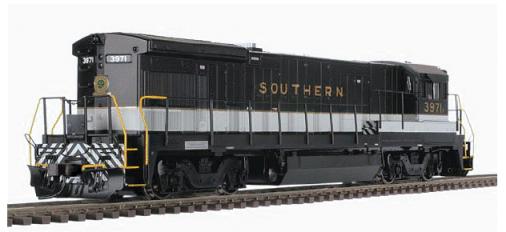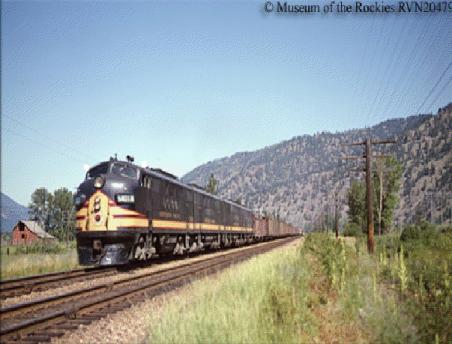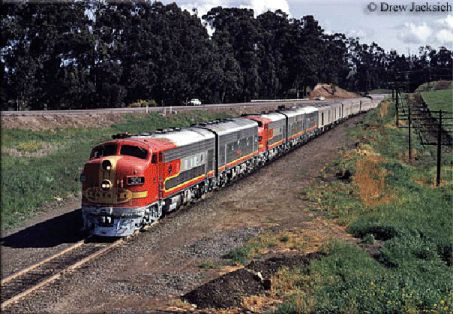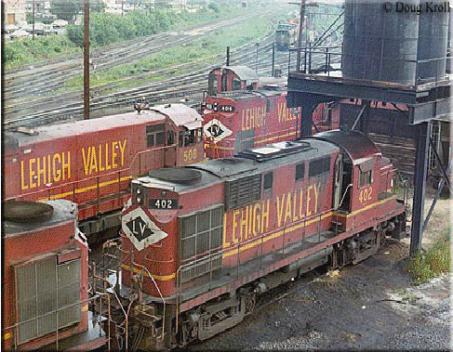|
|
Railroad history in the United States is nearly as old as the country itself, dating back to the mid-1820s. As we know this great nation of ours would not have grown and prospered as it did without the railroads which brought together the young United States and allowed for unprecedented growth and prosperity. The history here lasted from roughly the 1880s to the 1920s before other modes of transportation (such as automobiles and airplanes began to take over the industry as the leading means of moving people and goods. Railroading faced its toughest adversity during the 1960s and 1970s when it lost so much market share that many old companies were either purchased by stronger ones or simply went bankrupt. After the industry was deregulated by Republicans and Reagan in the 80ís it began to make a comeback and today is seeing a renaissance. So letís look at the railroad history of our country from its earliest beginnings in the 1820ís to where it is today. Railroad history in America had its earliest beginnings dating back to 1815 when Colonel John Stevens gained the first railroad charter in North America to build the New Jersey Railroad Company, although it was never actually constructed until 1832, and would eventually become part of the Pennsy System. Colonel Stevens also tested the first steam locomotive in the country in 1826, when he showcased his "Steam Waggon" on a small circular track he had built on his estate in Hoboken, New Jersey. Later, in August of 1829 Horatio Allen, a chief engineer for the Delaware & Hudson Canal Company (later the Delaware & Hudson Railway) tested an early English steam locomotive design on a 16-mile stretch of track the company owned between Honesdale and Carbondale, Pennsylvania. The locomotive used was named the Stourbridge Lion, which was a very simple two-axle engine with a vertical boiler, and it was employed to move coal from the mines at Carbondale to Honesdale. A year after that in August of 1830 the three year old Baltimore & Ohio Railroad tested its famous Tom Thumb designed by Peter Cooper and a month later the South Carolina Canal & Railroad Company tested its noted design the Best Friend of Charleston. The South Carolina Canal & Railroad Company would also be remembered by history as it was the first railroad to haul a revenue train with an American built steam locomotive when its Best Friend of Charleston, which was built by the West Point Foundry in New York, carried a trainload of passengers on December 25, 1830. While the steam locomotive had proven its worth as a reliable piece of machinery in which railroads could haul their goods it was the B&O that is remembered as our nation's first common carrier railroad when it was chartered on April 24, 1827 by the City of Baltimore to compete with the Erie Canal which connected Albany to Buffalo and another proposed in western Pennsylvania. Soon after in 1827 Charleston, South Carolina merchants chartered the South Carolina Canal & Railroad Company which was to connect Charleston and Hamburg along the Savannah River on a 137 mile system. Following the creation of the B&O and success of the steam locomotive railroad mania struck the nation as a fast and efficient means of moving goods. By 1840 the states east of the Mississippi River boasted over 2,800 miles of track and by 1850 that number had more than tripled to over 9,000. During these early years much of the trackage was still disconnected with most concentrated in the Northeast with the rest scattered in the Southeast and Midwest, much of which ranged in track gauge from the standard 4 feet 8 1/2 inches to six feet. There was also little government oversight during these early years and as a result the public suffered from unsafe practices and the unwillingness of railroads to interchange traffic with another due to the greed and selfishness of the owners. While some of the public was wary of railroads at first such as claiming them to be a "device of the devil" as one school board in Ohio put it or that travel by train would cause a "concussion of the brain" the efficiency they brought could not be argued. For instance, railroads could cut the distant it took between cities by steamboats in half. A good example is traveling between Cincinnati and St. Louis. By water this trip took 702 miles and three days but by railroad it took only 339 miles and 16 hours. While the Civil War was devastating to the nation it was also hard on railroads, particularly in the South. Despite the carnage brought by the war the railroad further proved its worth as a reliable and efficient means of moving men and material. After the discovery of gold in California the rush to the west coast was on and this included the railroads.
Being given large tracts of land by the government the railroads were finally able to complete the line on May 10, 1869 at Promontory Point, Utah. Without this bill signed by Lincoln railroad history and that of our country would likely have been very different. After the completion of the transcontinental railroad the industry exploded in terms of mileage and by the 1890s there was over 163,000 miles in operation. This time also saw many other advances such as the agreement on the standard track of 4 feet, 8 1/2 inches in the 1880s and the development of the automatic coupler and air brake, which revolutionized efficiencies railroads could provide along with allowing for much safer operations.
Below is a timeline of railroad mileage through the years:
During the 1930s the streamliner era hit the nation as railroads attempted to sway patrons back to the rails since automobiles had become so reliable and affordable folks were taking to the road more and more. In terms of traffic World War II was a final act for the railroads in general. After the war ended both passenger and freight traffic declined steadily through the 1950s and no matter how hard railroads tried to lure passengers back onto trains it was to no avail. The decade saw the beginning of the mega-merger movement when smaller lines like the Virginian Railway were purchased by larger ones like the Norfolk & Western Railway. The 1960s would set the stage for the disaster of the 1970ís as the industry cut maintenance and passenger trains drastically in an attempt to reduce costs. The common observer could see for themselves as tracks became weed-choked and many passenger trains were dilapidated with dirty and worn out equipment as was also the case of freight trans.
Railroad history might likely be very different if it wasn't for the Staggers Rail Act of 1980 proposed by Harley Staggers of West Virginia so that the railroad industry was able to regain its footing. The bill allowed railroads to be much deregulated and allowed them to more freely set their own freight rates and abandon unprofitable rail lines. Before this time railroads had been mostly left for dead as an outdated mode of transportation that should go the way of the stagecoach. The 1980s saw a slow recovery as Conrail posted its first profits in 1983 and the mega-merger movement continued with today's Norfolk Southern Railway and CSX Transportation formed during the decade. The 1990s also saw a continued trend of mergers with the Atchinson, Topeka & Santa Fe Railway disappearing into the Burlington Northern Santa Fe Railway system when it merged with the Burlington Northern in 1995. That same year Union Pacific purchased the Chicago & North Western Railway and NS and CSX gobbled up Conrail in 1999. The first decade of the 21st century has continued to see a railroad revival as freight has poured so heavily onto the rails that the industry is running out of capacity, a scenario many thought would never happen and has not been seen since World War II. We have also seen a renaissance of passenger railroading as folks flock to trains to beat the gridlock and look for a more relaxing way to commute and travel. The recovery of the railroad industry has been partly due to deregulation. However, other factors have also caused the revival. First, as our nation's infrastructure has been neglected over the past several decades highway congestion has gotten worse and worse. Today it has reached near critical levels and the only relief valve available is trains, thus people and goods have been returning to the rails. Another factor is the environment. These days everyone is thinking green and since nothing is more efficient at moving people or goods per fuel mile than trains railroads have gained much praise for their environmental friendliness. Without the railroads it is probably safe to say that our country would not be the world leader that it is today and without them in the future there is little chance we, as a nation, could remain the power that we are. Yes, we may not have the most advanced high speed passenger rail system in the world, which, quite honestly is rather embarrassing, but we do have the most efficient and advanced freight system, which is now marveled and emulated by other countries. Researched and Compiled by Leo C. HelmerClick on author's byline for bio and list of other works published by Pencil Stubs Online.
|






